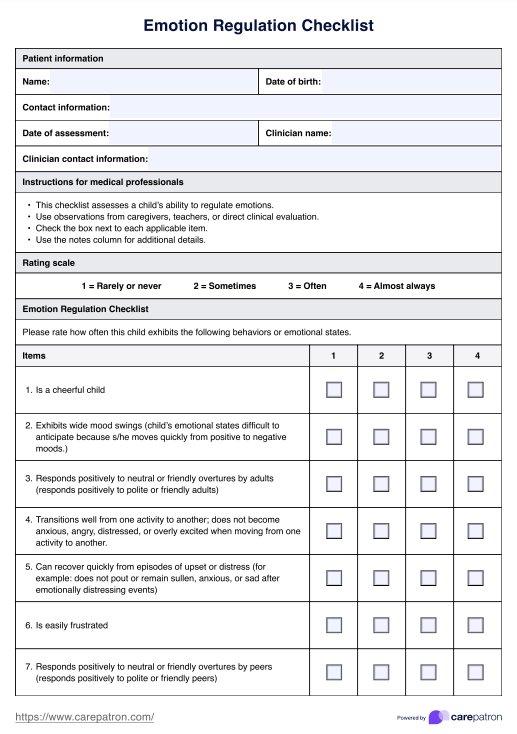The Emotion Regulation Checklist (ERC) is a structured assessment tool medical professionals use to evaluate a child’s ability to regulate emotions. It measures negative emotions, affective stability, and adaptive behavior, helping clinicians identify emotional regulation challenges across different age ranges.

Emotion Regulation Checklist
Download Carepatron's free Emotion Regulation Checklist PDF to effectively manage and regulate patients' emotions.
Emotion Regulation Checklist Template
Commonly asked questions
The five steps of emotional self-regulation include recognizing emotions, understanding emotional triggers, developing coping strategies, applying regulation techniques, and evaluating outcomes. These steps help individuals manage angry outbursts, respond appropriately to neutral or friendly overtures, and build emotional resilience.
The four emotional regulation Rs are Recognize, Reflect, Regulate, and Respond. This framework helps individuals identify emotional states, assess their impact, implement adaptive behavior strategies, and adjust responses to maintain affective stability.
EHR and practice management software
Get started for free
*No credit card required
Free
$0/usd
Unlimited clients
Telehealth
1GB of storage
Client portal text
Automated billing and online payments











